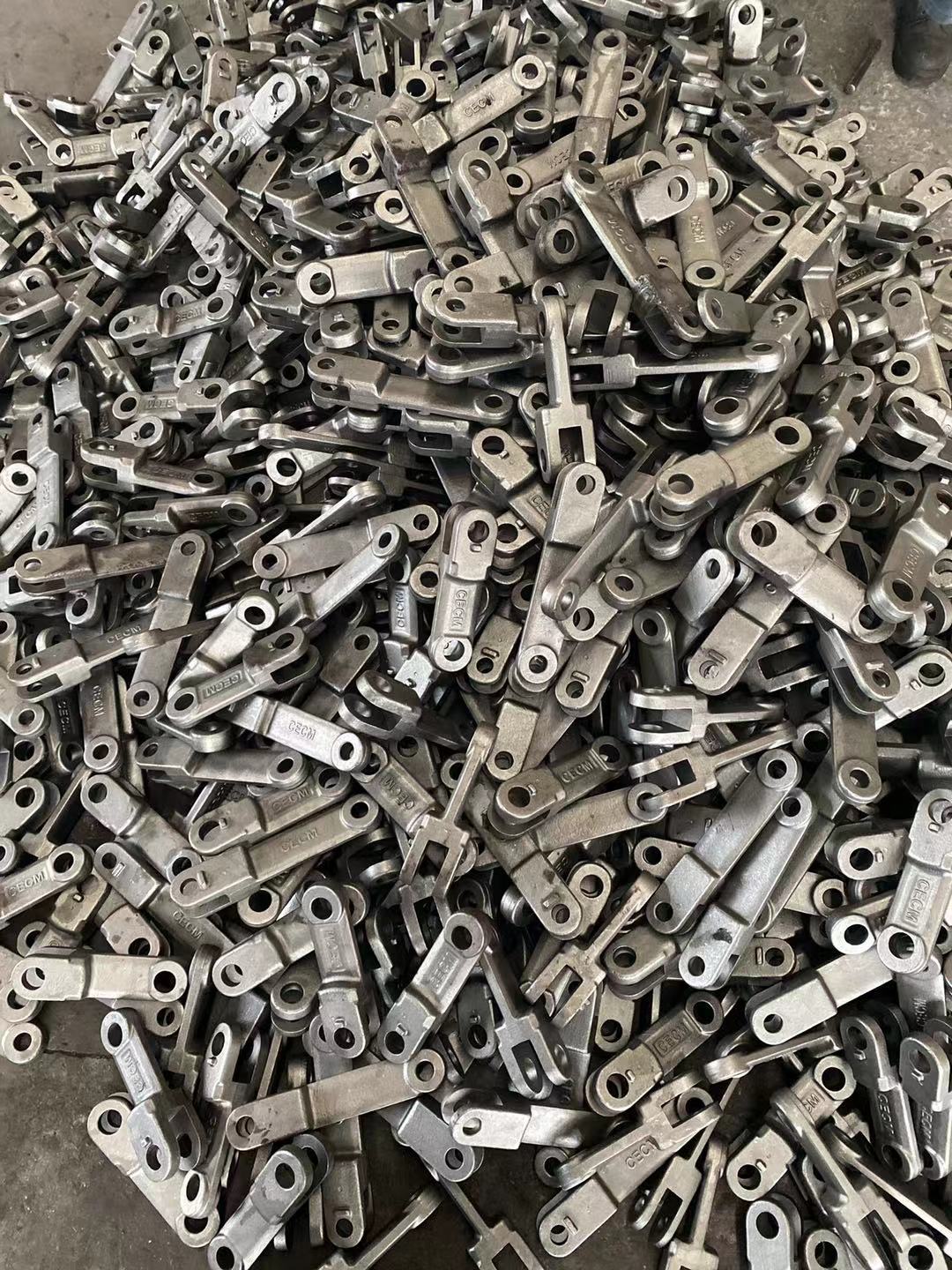Analyze the determination of parting die surface of forging accessories
2022-12-01
The parting surface of forging accessories is the interface between the upper die and the lower die on the die forging. The rational choice of parting surface position is related to forging forming effect, forging die and material utilization rate. The principle of choosing parting surface is: (1) choosing parting surface as plane, the depth of die hole of upper and lower forging die should be basically the same. (2) ensure that the forging die can be removed from the die hole smoothly; (3) It is better to choose the parting surface where the cavity depth is shallow, so that the metal can fill the cavity easily and it is easy to take out the forging. (4) The selected parting surface should minimize the trimming of forging to save materials.
The basic principle to determine the location of parting surface is: first, keep the shape of the forging and the shape of the part is basically the same, and the easier it is to remove from the mold cavity; Attempts were made to obtain the upsetting deformation mode because the deformation resistance during upsetting deformation was small. Therefore, the parting position of the forging should be selected in the position with the larger horizontal projection size.
In order to improve the quality of forging parts and the stability of the production process, in addition to meeting the above parting principles, the following requirements should also be considered when determining the parting position of open forging:
1. In order to make the die parting structure as simple as possible and facilitate the detection of the dislocation of the upper and lower dies in the process of die forging, the die parting surface should be linear as far as possible, and the die parting line should be selected in the middle of the side of the forging.
2. For long shaft forgings with large head size, die parting should not be straight line, but broken line, so that the depth of upper and lower die cavities is too equal, so as to keep the sharp Angle can be filled overall.
3. In order to facilitate forging die manufacturing, forging trimming and saving metal materials, radial parting should be considered for round cake forgings ≤ (2.5 ~ 3) d, no matter hammer forging, crank press or screw press, and axial parting should be avoided as far as possible. Because the radial parting forging groove can be turned, high efficiency, saving time, repair die edge shape is simple, convenient manufacturing; Radial parting can also forge the inner cavity, saving metal. However, when h/d is large and the hammer is used for die forging, it is obvious that radial parting will not continue to be considered. If the radial parting is still used, the height and size of the die are too large, the forging is difficult, the impact energy is reduced, and the required die force is larger.
The basic principle to determine the location of parting surface is: first, keep the shape of the forging and the shape of the part is basically the same, and the easier it is to remove from the mold cavity; Attempts were made to obtain the upsetting deformation mode because the deformation resistance during upsetting deformation was small. Therefore, the parting position of the forging should be selected in the position with the larger horizontal projection size.
In order to improve the quality of forging parts and the stability of the production process, in addition to meeting the above parting principles, the following requirements should also be considered when determining the parting position of open forging:
1. In order to make the die parting structure as simple as possible and facilitate the detection of the dislocation of the upper and lower dies in the process of die forging, the die parting surface should be linear as far as possible, and the die parting line should be selected in the middle of the side of the forging.
2. For long shaft forgings with large head size, die parting should not be straight line, but broken line, so that the depth of upper and lower die cavities is too equal, so as to keep the sharp Angle can be filled overall.
3. In order to facilitate forging die manufacturing, forging trimming and saving metal materials, radial parting should be considered for round cake forgings ≤ (2.5 ~ 3) d, no matter hammer forging, crank press or screw press, and axial parting should be avoided as far as possible. Because the radial parting forging groove can be turned, high efficiency, saving time, repair die edge shape is simple, convenient manufacturing; Radial parting can also forge the inner cavity, saving metal. However, when h/d is large and the hammer is used for die forging, it is obvious that radial parting will not continue to be considered. If the radial parting is still used, the height and size of the die are too large, the forging is difficult, the impact energy is reduced, and the required die force is larger.
4. For forging accessories with metal streamline requirements, in order to avoid cutting the fiber structure, the die should be divided along the cross section shape of the forging as far as possible, such as the rib top die. At the same time, the stress of the forging in operation should be considered, and the fiber structure should be perpendicular to the direction of shear stress.

X
We use cookies to offer you a better browsing experience, analyze site traffic and personalize content. By using this site, you agree to our use of cookies.
Privacy Policy



